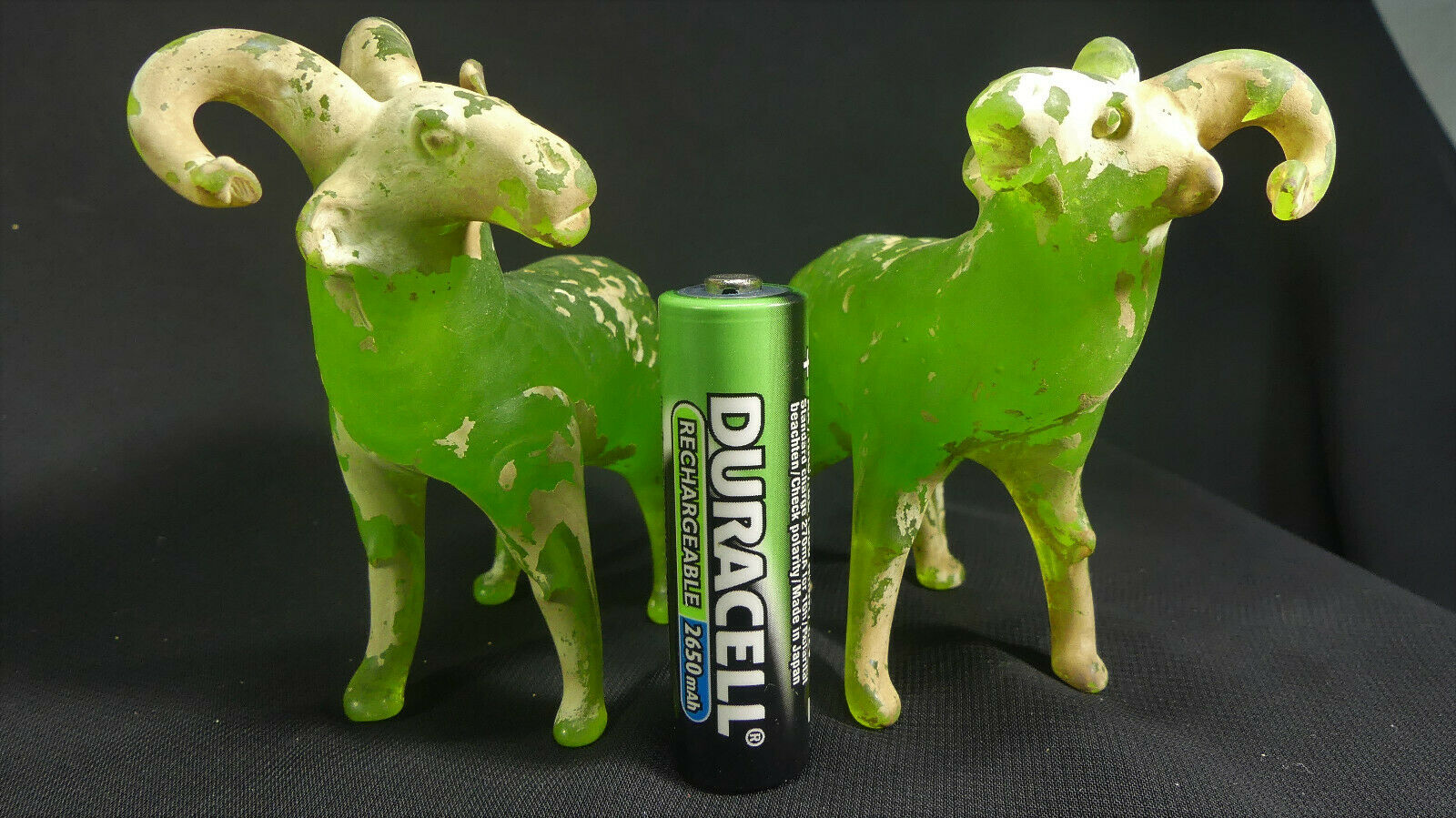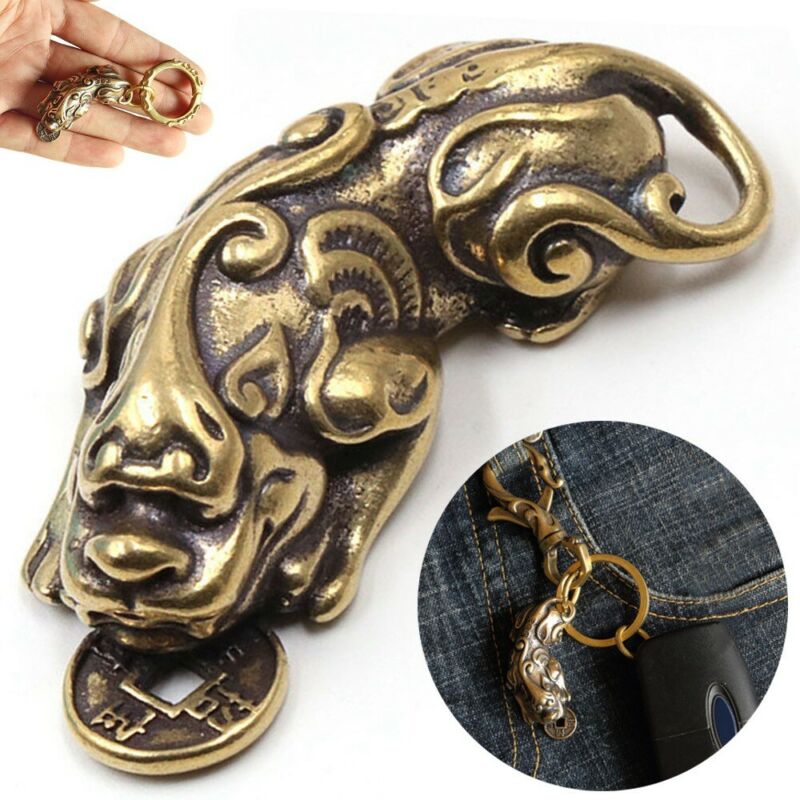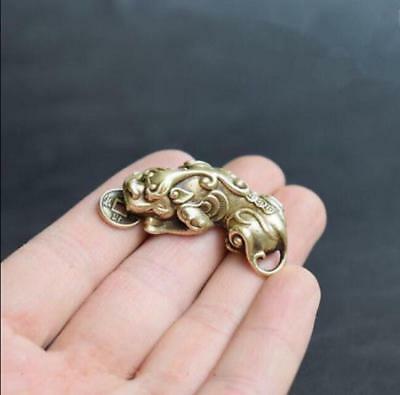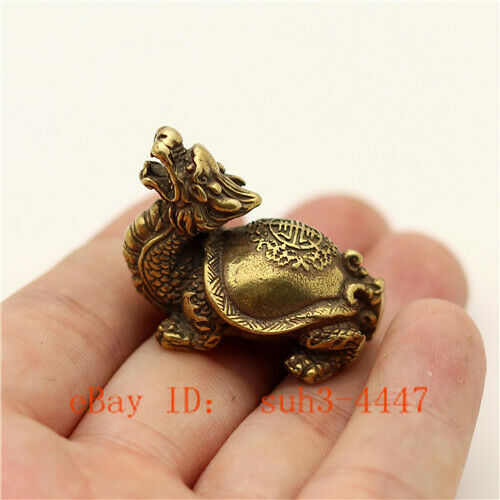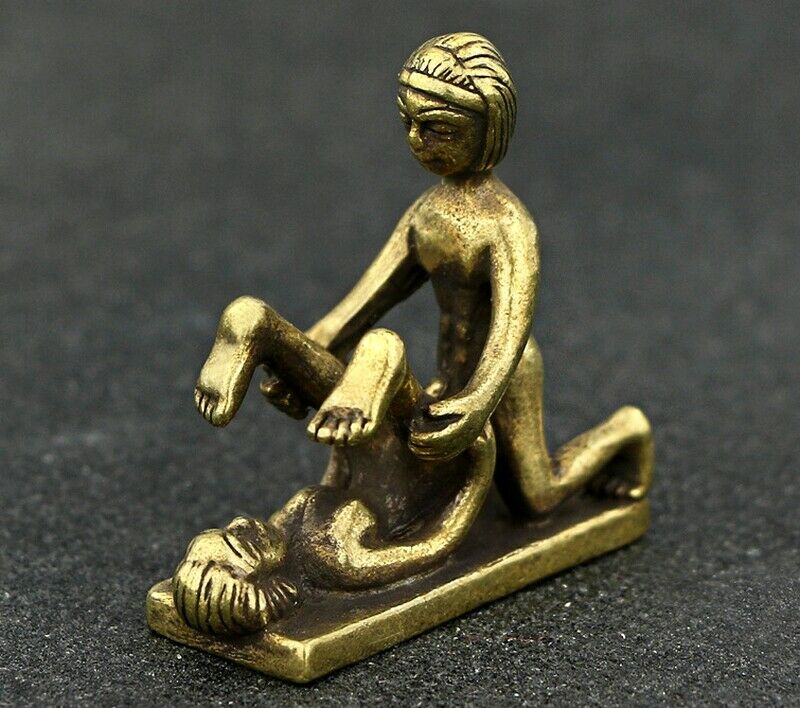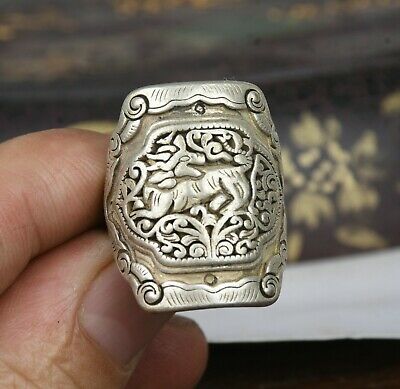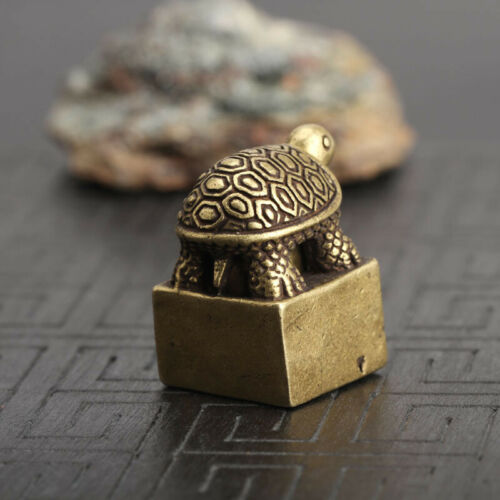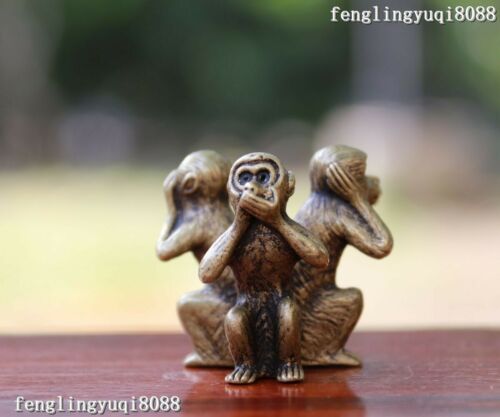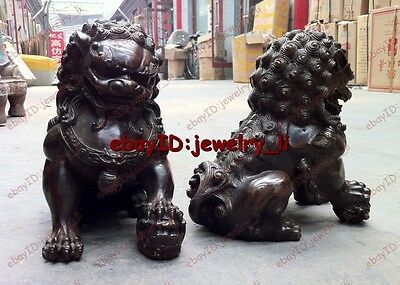-40%
An Ancient Pair of Chinese Glass Year of Ram--Tang Dyn.Translucent Green Glass
$ 2518.56
- Description
- Size Guide
Description
ANCIENT CIVILIZATIONSArtifacts, Antiques, & Fine Collect
i
bles
A Pair of Ancient Chinese Glass Rams
c. Tang Dynasty
618—907
PROVENANCE/HISTORY
This ancient pair of green glass Rams was obtained from an old collection that once was held in Henan, China. The collection was reportedly moved to Hong Kong.
This is the first time it has been offered for sale in the United States.
This museum quality item with some calcium deposits still shown. As a pair, this set of two Rams is Extremely RARE and is Guaranteed authentic and original!
This item is legal to buy/sell under U.S. Statute covering cultural patrimony Code 2600, CHAPTER 14, and is guaranteed to be as described or your money back.
This item will come with a Certificate of Authenticity (COA) from ANCIENT CIVILIZATIONS.
SUMMARY
Name:
A Pair of Chinese Glass Figurine Rams
Material:
Translucent Green Glass
Length:
3.36” (85 mm) and 3.61” (92 mm)
Height: 3" (76 mm)
Weight:
3.8 oz. (108 gr.) and 4.2 oz. (119 gr.)
Origin:
Luoyang, Henan, China
Dynasty:
Tang Dynasty
Est. Date:
618—907
Provenance:
This lovely pair of glass rams with curved horns was recovered decades ago near the modern Chinese city of LuoYang, Henan, China.
They have been in several private collections in China and Hong Kong, and this is the first time it has been for sale in the United States.
Condition:
Museum quality, as found condition.
They are partially encrusted with white mineral deposits (calcium) that accumulated on the green glass after it was buried for millennia in damp soil.
Much of the calcium deposits were removed by the previous collector to show the beautiful, translucent green glass.
No repairs or restorations. Handmade with pontel marks on the underside of each Ram. Please see photos and bid accordingly.
DETAILS & HISTORY
This pair of translucent, green glass Rams figurines date to the China’s famous Tang Dynasty (618—907). There appears to be Chinese characters on the underside of each Ram, but the characters are so faint that I can not reliably translate them into English. {See photo # 5-6}
The history of Chinese glassmaking dates to the Western Zhou period (1046 BCE-771 BCE) of the Zhou dynasty (1046 BCE-256 BCE). Glass beads were the earliest form of glassmaking and progressed to ritual and burial objects that imitated precious stones such as jade. It was not until the Tang Dynasty and the later Qing Dynasty (1644-1911) that glassmaking in China reached its peak.
Glass was always regarded as a foreign material in China, as opposed to the more familiar jade and ceramic. Glassmaking, forming, and decorating followed the ideas of other traditional arts and crafts within a highly-formatted pattern and hierarchy. The best-known characteristics of Chinese glass are its simple form, monochrome color, and opaque or translucent effects.
Sheep/Ram Symbolism in Ancient China
The Chinese commonly regard sheep as an auspicious animal, and the year of the sheep, therefore, heralds a year of promise and prosperity. "
Yáng
" (
羊
) is a component of another written Chinese character "
xiang
" (
祥
), which means auspiciousness, and the two were interchangeable in ancient Chinese, according to one source.
In ancient China, a sheep symbolized the concept of justice.
Xiezhi
was a mystical sheep that sought out people who had committed crimes and would gore them with its horns for punishment. Some tales said that the sheep would eat criminals instead. Some old parts of China still use the sign of a sheep as a mark of office for judges.
As the chest of this ram has what appears to be some type of official robe, this seal was perhaps used by a judge over 2,000 years ago.
In Chinese, the same character
羊
(
yáng
) is used to refer to both the sheep and the goat. The character is a pictogram that depicts the head of the animal, with its two horns at the top as a dominant feature. The horizontal stroke below the horns depicts the ears, while the rest of the character represents the face.
In traditional Chinese culture,
羊
(
yáng
) is considered a symbol of auspiciousness, good luck, and peace. These concepts collectively are written as
吉祥
(
jí xiáng
) today, but this term was written as
吉羊
(
jí yáng
) in ancient times, when the character for peace/auspiciousness,
祥
(
xiáng
), was written as
羊
(
yáng
).
羊
is a symbol of auspiciousness and good luck due to its many benefits to humankind. Its meat and milk are highly nutritious, and its wool makes fabric that is lightweight, soft, and warm. In ancient times, when a hunter brought home a
羊
(
yáng
), it was considered an auspicious omen.
The
羊
can also symbolizes peace, as they are a calm, docile, and gentle animal. Even when they do fight occasionally, they will mainly bump against each other’s horns to test each other’s strength.
Specifically,
山羊
(
shān yáng
) refers to a mountain goat, or simply a goat;
綿羊
(
mián yáng
) refers to a wool sheep, or simply a sheep;
羚羊
(
ling yáng
) is an antelope; and
羊羔
(
yáng gāo
) is a lamb.
Some common character combinations using
羊
include
羊皮
(
yáng pí
), sheepskin, lambskin, or goatskin;
羊毛
(
yáng máo
), meaning wool or fleece;
羊毛衫
(
yáng máo shān
), a knitted sweater; and
羊脂
(
yáng zhī
), suet, or mutton fat.
TANG DYNASTY
{Courtesy of WIKIPEDIA}
The Tang dynasty (A.D. 618-907) is regarded by historians as a high point in Chinese civilization - equal, or even superior, to the Han period.
During the Tang Dynasty, China became an expansive, cosmopolitan empire. The capital city,
Chang'an
, became the world's largest city and attracted traders and pilgrims from all over the world. Foreign influences enriched Chinese art and culture.
Even throughout the Tang (618-907), glass seems to have remained rare and was not much used in daily life, not even at court, but appears to have been largely reserved for use in a Buddhist context. Although Schafer talks about several foreign missions bringing gifts of glass to the Tang court in Chang’an, and even states that Emperor’s Xuanzong’s (r. 713-756) notorious concubine Yang Guifei is reputed to have drunk grape wine from a glass cup, that cup was apparently decorated with the Seven Teasures of Buddhism (Edward H. Schafer, The Golden Peaches of Samarkand, Berkeley/Los Angeles, 1963, p. 143 and pp. 234-6).
Actual glass vessels of the Tang dynasty are few and far between and no example approaching the monumentality of the present piece appears to have been published. One of the most important pieces would seem to be a large (29 cm) stem tray, whose use in ceremonies in the Tōdai-ji, Nara, is recorded for the year 752. It is preserved in the Shōsō-in, Nara, the storehouse of the personal belongings of Emperor Shōmu (r. 724-749), whose personal effects were donated to the Great Buddha at Tōdai-ji.
In her study of the Silk Road, Susan Whitfield states:
“
During the Chinese Tang and Northern Song periods (618-907 and 960-1127 respectively), glass was still little known in China, and used almost exclusively by Buddhist communities. Glass was cherished because of its origin in the west, like Buddhism, and for its transparency, which was associated with purity. Glass was also regarded as one of the Seven Treasures of the Buddhist Paradise, hence an appropriate material for offerings and religious accessories. Glass vessels in Buddhist stupas served two different purposes: they were used as reliquaries, to hold the precious remains of the historical Buddha Śākyamuni and important monks; or they were given as offerings by devotees.”
(
Susan Whitfield,
The Silk Road, Trade, Travel, War and Faith
, London, 2004, p. 157).
The Tang dynasty and the centuries proceeding it saw an unequalled flowering of the Buddhist doctrine, which exerted a major influence on all strata of Chinese society right up to the court. Despite repeated controversies that unfolded around the growing popularity of this religion, the increasing riches of temples and the explosion of the number of monasteries, Buddhism continued to grow in popularity. Emperors, who had a much closer affinity to Daoism and undertook repeated efforts to curtail the expansion of the Buddhist religion, such as Emperor Xuanzong, for example, were nevertheless fascinated and attracted by Esoteric Buddhism with its mystical practices, as was Tang aristocracy in general. Even the radical prosecution of Buddhists in 845 only seems to have sparked off a temporary setback, of fairly short duration, for Buddhist beliefs.
During the Tang dynasty, Luoyang was Dongdu (
東都
), the "Eastern Capital", and at its height had a population of around one million people, second only to
Chang'an
, which, at the time, was the largest city in the world.
The name "
Luoyang
" originates from the city's location on the north or sunny ("
yang
") side of the Luo River. Since the river flows from west to east and the sun is to the south of the river, the sun always shines on the north side of the river.
Luoyang
has had several names over the centuries, including
Luoyi
(
洛邑
) and
Luozhou
(
洛州
), though
Luoyang
has been its primary name. It has also been called
Dongdu
(
東都
; 'Eastern Capital') during the Tang dynasty,
Xijing
(
西京
; 'Western Capital') during the Song dynasty, or
Jingluo
(Chinese:
京洛
; lit.: 'Capital Luo'). During the rule of
Wu Zetian
, the only female emperor in Chinese history, the city was known as
Shendu
(
神都
; 'Divine Capital').
At the interval of Tang dynasty, the first and the only empress in Chinese history – Empress Wu, moved the capital of her Zhou Dynasty to Luoyang and named it as
ShenDu
(Capital of the God). She constructed the tallest palace in Chinese history, which is now in the site of Sui Tang Luoyang city. Unfortunately, Luoyang was heavily damaged during the An Lushan Rebellion.
REFERENCES
1.
Museum of Chinese History, Beijing
2.
Shanghai Museum of Glass, Shanghai, China
3.
Hunan Museum, China
4.
Palace Museum, Beijing, China
5.
Henan Provincial Museum, China
6.
Shaanxi Archaeology Institute, China
7.
The Ancestral Landscape
, David N. Knightley, 2000
8.
The Great Bronze Age of China
, edited by Wen Fong, MET, 1980
9.
China:
A Dawn of the Golden Age.
10.
Changhua Annals of the Republic of China
(1911–1949)
11.
British Museum, Jessica Rawson
12.
Smithsonian Museum, Sackler & Freer Gallery, WDC
13.
MET, New York
14.
Chinese History Museum in Beijing, China, contains an outstanding collection of early Chinese glass objects, including a small, glass aqua cup that was found in a Han Dynasty tomb in Guangxi Province, China.
15.
See “
Ancient Glass Research Along the Silk Road
” Edited by Gan Fuxi (Chinese Academy of Sciences & Fudan University, China), Robert Brill (The Corning Museum of Glass, USA), &
Tian Shouyun
(Chinese Academy of Sciences, China). This book states that ancient Chinese glass from the Eastern Han Dynasty to the Tang Dynasty (200-700 AD) contained High Lead Silicate or PBO-SiO2.
Although chemical tests have not been run on this glass
Jue
, it is believed that it made from this glass composition.
16.
See “
Scientific Research in Early Chinese Glass
” 1991, Author: Robert H. Brill and John H. Martin, editors.
17.
Kwan, Simon; Early
Chinese Glass
; Hong Kong, 2001. ISBN. 9627 101524
18.
Susan Whitfield,
The Silk Road, Trade, Travel, War and Faith
, London, 2004
Member of the Authentic Artifact Collectors Association (AACA)
COLOR SYMBOLISM IN BUDDHISM
The green color used in this pair of Rams was not chosen just just its beauty, but also for its symbolism in the Buddhist religion.
Buddhism traveled from India into China during the 1st century AD, becoming part of Chinese life and culture alongside the other established belief systems. Statues and Buddhist-related items like these were commissioned by followers.
Color symbolism is used in a wide variety of fascinating ways in Buddhist art and ritual.
In Buddhism, each of five colors (
pancha
-
varna
: which are Blue, Black, Red, Green and Yellow) symbolizes a state of mind, a celestial Buddha, a part of the body, a part of the
mantra
word Hum, or a natural element. It is believed that by meditating on the individual colors, which contain their respective essences and are associated with a particular Buddha or Bodhisattva, spiritual transformations can be achieved. Blue minerals were the most expensive and rare color in ancient China and had to be imported from the Far East.
Bid with confidence--as I have Positive Feedback from
thousands
of satisfied customers from around the world!
Please look carefully at the photos, taken with macro lens, since they are part of the description. Some photos taken indoors with a strong back light to show the beauty of the translucent glass vessel.
It
would make a
wonderful
addition to your collection or a Super gift for someone born in the Year of the Ram!
I will
not
separate this stunning pair of Rams and sell them separately. The Buyer must purchase the pair.
The stand
and AA battery are
not part of the sale, just there to give you a better perspective and a good view of item.
And please ask any questions before you buy.
Thanks!
International buyers are responsible for all import taxes, duties, and shipping costs.
